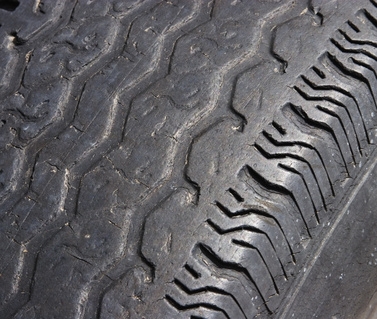
Regular inspection of the tires on your car or truck is an important safety practice. Tires will wear out with time and mileage. As tires wear they will give visual clues whether they are wearing down normally or if there is something wrong.
The normal wear for a tire is an even reduction in tread depth across the tire. A tire is considered worn out and should be replaced when the tread has worn to less than 1/16 inch deep. You can determine if you have too little tread depth by sticking a penny in the tread with Lincoln's head toward the tire. If you can see the top of his head, the tire is worn out and should be replaced.
Tires may also have wear bars which will show as solid rubber bars across the tire tread when the tread had been worn down to the level where is should be replaced.
Uneven tread wear is an indication of some sort of problem with the tire. Make a visual inspection of the entire tire and note the wear pattern. How the tire has worn will give an indication of what is wrong with the tire or vehicle.
Excess wear down the middle of the tire is a indication of over-inflation. Check the vehicle manufacturer's guide for proper inflation pressure and make sure all of the tires are properly inflated.
Even wear on outside of the tread with the center not wearing is a sign of under inflation. This tread wear pattern will be even on both sides of the tire tread area. If a single tire is showing under-inflation wear have it checked for leaks and repaired.
Excess wear on a single side of the tire tread indicates the tire is leaning too much in or out from the vehicle. The wear can be caused by a suspension out of alignment or worn parts in the suspension or steering systems.
Cupping is when the tread is wearing unevenly around the circumference of the tire. The tread will be worn more in some place than in others as you go around the tire. Cupping can be caused when a tire is out of balance or if a shock absorber is worn out.
According to tiresafety.com, only one out of seven drivers regularly check their tire pressure. The key to even tire wear and maximum life out of your tires are maintaining proper tire pressure. Uneven tire wear may not be a problem with the tire, but could be an indication of other problems in the cars suspension system. Regular tire rotation will help you avoid the necessity of replacing a tire early if there are problems in the suspension.